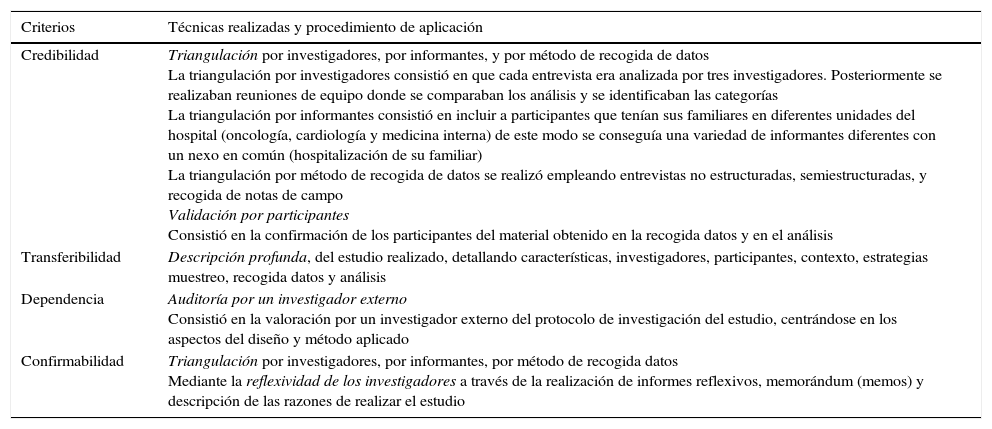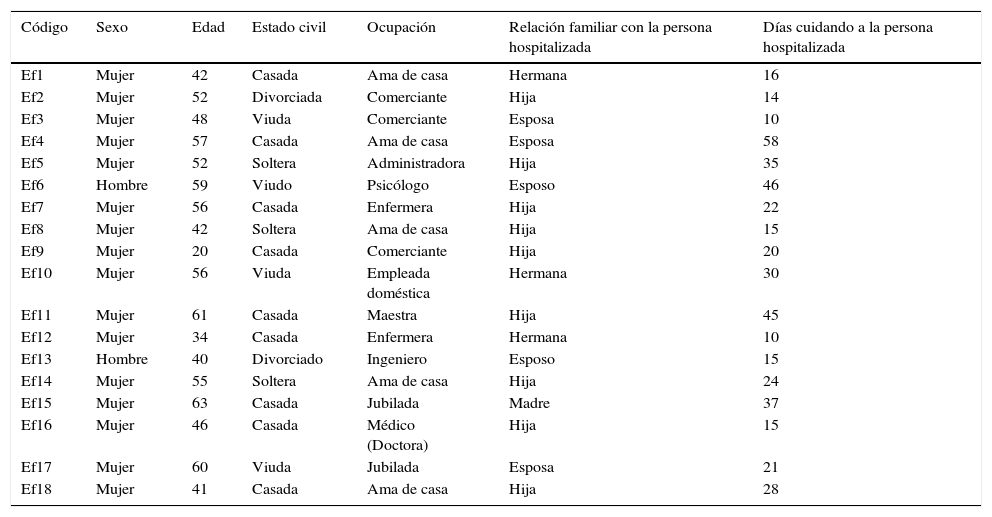Conocer el significado de la hospitalización para la persona cuidadora de la persona enferma ingresada.
MétodoEstudio cualitativo, aplicando teoría fundamentada. Se incluyeron participantes que cumplían los siguientes criterios: a) ser parte de la familia; b) la persona enferma estaba ingresada en hospitales del estado de Chihuahua; y c) la persona hospitalizada era mayor de 18 años. Se aplicó un muestreo intencional. La recogida de datos se realizó a través de entrevistas en profundidad no estructuradas y semiestructuradas. De igual modo se aplicaron memos en el proceso de recogida. Se aplicó un análisis basado en la teoría fundamentada, con una codificación abierta, axial y selectiva, identificándose las categorías y subcategorías. Durante el proceso de análisis se aplicó el método de comparación constante.
ResultadosSe incluyeron 18 participantes; 16 fueron mujeres, con una edad media de 48,11 años. Se identificó la categoría central: «el ser al desnudo», formada por las categorías; «yo frente a la enfermedad» donde se describen las situaciones que vive la persona cuidadora durante y después del proceso de hospitalización; «tiempos de guerra» hace referencia a los problemas familiares que se desarrollan o agravan durante el proceso de la hospitalización; y «bailando bajo la tormenta» se centra en aquellos cambios positivos que se dan en la persona cuidadora.
ConclusionesLa hospitalización provoca incertidumbre en la persona cuidadora. Las enfermeras ayudan a facilitar la adaptación de la persona cuidadora durante el ingreso y a identificar sus propias fortalezas.
Knowing the meaning of hospitalization for the family caregiver of the hospitalized sick person.
MethodQualitative study using grounded theory. Participants were included if they met the following criteria: a) being part of the family; b) the sick person was admitted into a hospital in the state of Chihuahua; and c) the hospitalized person was over 18 years old. Sampling was applied by purpose. Data collection was conducted through in-depth interviews with an opening question. Similarly, memos were applied in the process of gathering. The analysis applied was based on grounded theory, with an open, axial and selective coding, identifying the categories and subcategories. During the analysis process the method of constant comparison was applied.
ResultsEighteen participants were included; 16 of whom were female. The mean age was 48.11 years old. The core category was identified: “the naked soul”, formed by the categories; “I deal with the disease” which describes the situations experienced by the caregiver during and after the hospitalization process; “wartime” makes reference to the family problems that develop or worsen during the hospitalization process; and “dancing in the storm” focuses on all the positive changes occurring in the primary caregiver.
ConclusionsHospitalization causes uncertainty in the caregiver. Nurses help facilitate the adaptation of the caregiver at baseline and identify their own strengths.
Artículo
Comprando el artículo el PDF del mismo podrá ser descargado
Precio 19,34 €
Comprar ahora









